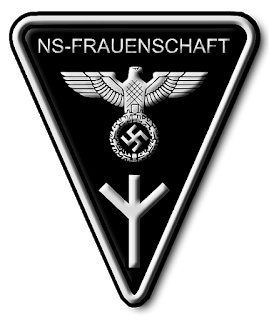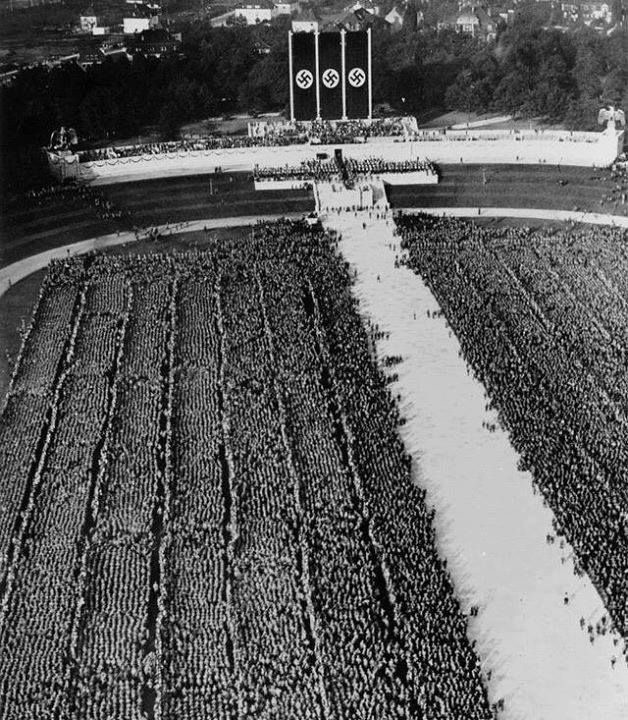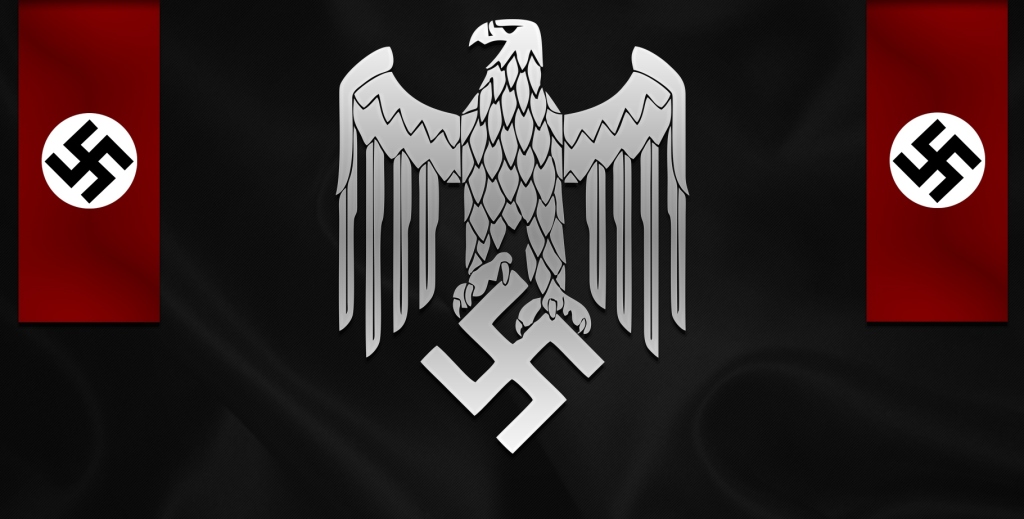
Der Reichsadler

The Essential Guide to Nazi Germany
Everything You Need to Know about the Third Reich

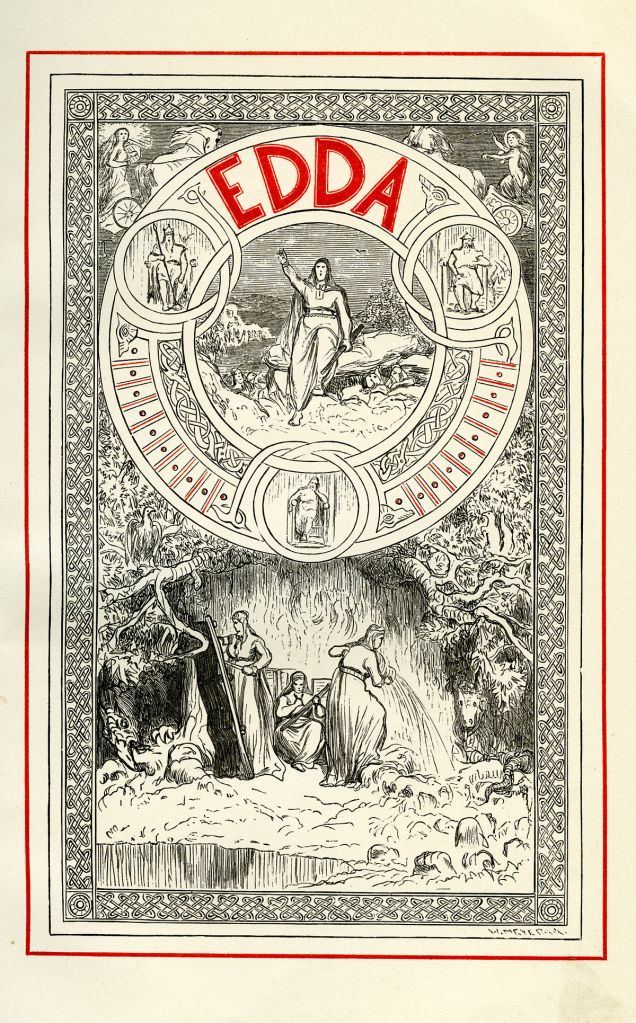
I have already stated that by the psychiatric standards of the time, the medical reasons commitment of Karl Maria Wiligut to the mental institution were solid. It is also known (well-known, actually) that he did not change his behavior (or his ideas for that matter) one bit.
However, he was allowed to maintain contact with “like-minded individuals” (i.e., with his colleagues in Austrian esoteric, occult and nationalistic circles) outside the asylum.
An unusual decision by the administration of the institution, to put it mildly – usually the patients are barred from any communication that could reinforce their “unhealthy” beliefs.
Wiligut communicated with prominent members of Order of New Templars (Emil Rüdiger, Friedrich Teltscher, Friedrich Schiller, etc.) and with several members of the Edda Society (a mystic study group).
Members of this society developed an original and eclectic mystery religion founded in part upon the Armanism of Guido von List. One of the prominent members of Edda was one Mathilde von Kemnitz, a prolific völkisch writer who married General Erich Ludendorff in 1926.
Probably the most interesting pen pal of Karl Maria Wiligut was Dr. Friedrich Teltscher – an authority on runic magic. He viewed runes (Armanen runes, to be more precise) as conduits of “subtle energies” (i.e. divine, supernatural, spiritual energies).
And still in early 1927, the Salzburg court reversed its verdict and let Wiligut out. Only one explanation makes sense – there was someone very influential (or a highly skilled manipulator) behind this unexpected decision (to put it mildly).
More likely, the manipulator. It appears that by that time (Heinrich Himmler was already in the SS and the vision and blueprints for the “Black Order” were all but ready), The Black Sun Society was actively looking for someone that they could use as an “informal communication channel” to SS-Reichsfuhrer (when Himmler inevitably becomes one).
Why they chose Karl Maria Wiligut (of all people), we have no idea and probably will never know. Most likely, the magicians of The Black Sun Society found in Wiligut’s writings (and probably in him personally – I have no doubt that they talked to him) something that made them believe that he was a perfect man (i.e., the perfect tool) for the job.
Surprisingly, Wiligut even went back to live with his family (he left them only in 1932 – five years later). Thus he remained in Salzburg and received visitors from Germany (the Edda circle) and from Vienna (mainly ONT brothers). In the fall of 1932 he received one mysterious Fräulein Frieda Dorenberg (almost nothing is known for certain about her).
She was a member of the NSDAP even before Adolf Hitler (she carried the membership number 6 while his was 55) and was sometimes called the “conscience of the [Nazi] Party.” She was also deeply involved in esoteric matters, and was a member of the abovementioned Edda Society.
It was Frieda Dorenberg (in cooperation with other individuals), who arranged to have Wiligut smuggled into Germany with a false identity. So, with his children grown, and freedom from observation by the authorities granted, Wiligut fled Austria in 1932 and began living underground near Munich in the suburb of Bogenhausen.
There he joined an esoteric circle called the Freie Söhne der Nord- und Ostsee (Free Sons of the North and Baltic Seas) and began to conduct lectures, seminars, workshops, etc. on esoteric and occult matters.
Wiligut, now in his late sixties (he was 65 in 1932), was well received and much respected in German völkisch circles. It is likely, of course, that at least some of this respect stemmed from his long and distinguished military record and his service in combat in the “Great War.”
Now everything falls into place and begins to make sense. Fräulein Frieda Dorenber was undoubtedly one of the agents (if not members) of The Black Sun Society who infiltrated NSDAP (then still DAP) even before Adolf Hitler joined the Nazi Party.
The Edda Society (founded by one Rudolf John Gorsleben – German Ariosophist, Armanist, practitioner of the Armanen runes, journal editor and playwright) was most likely the successor to The Thule Society as the new front for The Org and for The Black Sun Society (Edda Society was founded in 1925 – the same year the Thule Society disappeared into oblivion).
She convinced Wiligut that a great future awaits him in Germany. Which turned out to be true – as in September of 1933 (roughly a year after his escape to Germany), Karl Maria Wiligut met SS Reichsfuhrer Heinrich Himmler.
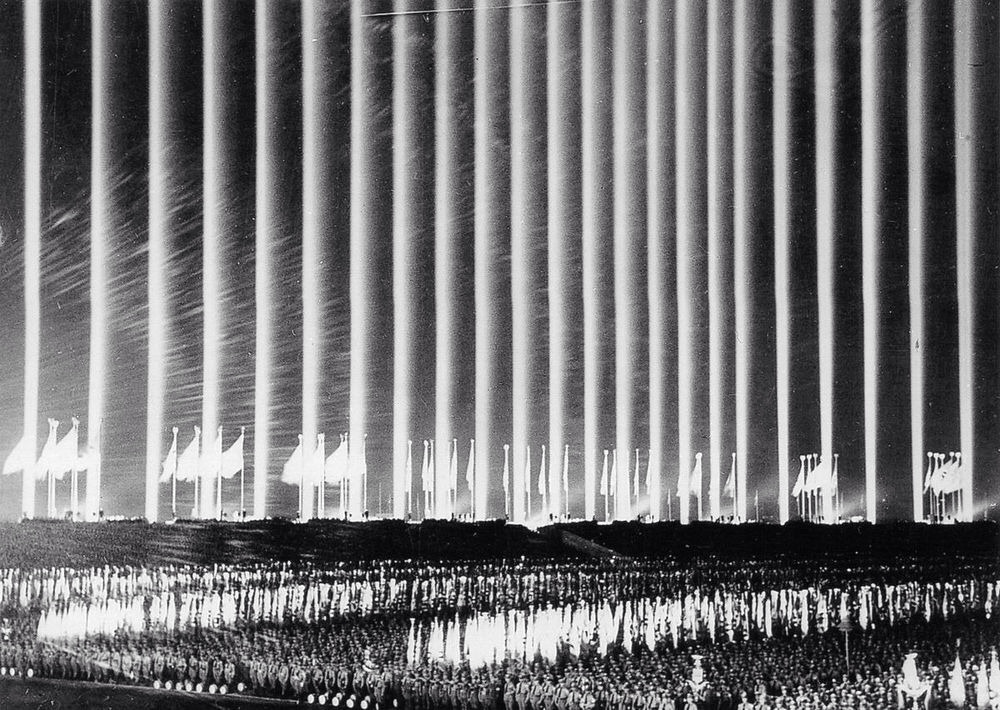
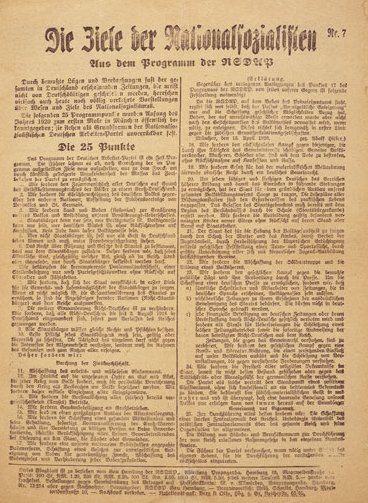 February 24th, 1920. The “25 Points” – official NSDAP Program – is made public. On the very same day the official name of the party from DAP to NSDAP, Adolf Hitler publicly revealed “The 25 Points” – the official program (actually, more like a manifesto) of the Nazi Party.
February 24th, 1920. The “25 Points” – official NSDAP Program – is made public. On the very same day the official name of the party from DAP to NSDAP, Adolf Hitler publicly revealed “The 25 Points” – the official program (actually, more like a manifesto) of the Nazi Party.
Contrary to what he subsequently claimed, Adolf Hitler did not author this “NSDAP Manifesto”. In reality, it was put together by Anton Drexler Gottfried Feder and Dietrich Eckart (i.e. by the Thule Society) with Hitler playing only a minor role in its creation.
It was not even unique as it was based on the “Austro-Bohemian Program” developed by Rudolf Jung – one of the leaders of German Bohemian National Socialist movement… and of the Austrian DAP (German Workers’ Party of Austria) founded in 1909, ten years prior to DAP.
In May of 1918, DAP was… renamed into Deutsche National-Sozialistische Arbeiterpartei (DNSAP) – German National-Socialist Party of Austria and… adopted a National Socialist Program, which two years later became the foundation for “The 25 Points” of the NSDAP (in a way, its German clone).
There is no evidence whatsoever that Rudolf Jung had any contact with the Thule Society (at least knowingly). However, it is highly likely that the Society used Jung’s DAP and DNSAP (and his party program, of course) as the foundation for the structures (DAP and NSDAP respectively) and his program as the foundation for “The 25 Points”.
In order not to “reinvent the wheel”, of course, because apparently Jung’s creations worked well enough for Thule to be used as blueprints for their activities in Germany.
I will analyze the “Nazi Manifesto” in a sufficient detail in one of the subsequent chapters of this book. For now, I will only say that it did its job – and did it well. Because its’ primary objective was propaganda – cut and dry, plain and simple, loud and clear.
According to historian Karl Dietrich Bracher (Hitler’s contemporary and thus an important eyewitness),
“The NSDAP program was little more than an effective, persuasive propaganda weapon for mobilizing and manipulating the masses. Once it had brought him to power, it became pure decoration: ‘unalterable’, yet unrealized in its demands for nationalization and expropriation, for land reform and ‘breaking the shackles of finance capital’. Yet it nonetheless fulfilled its role as backdrop… against which the future dictator could unfold his rhetorical and dramatic talents [as well as political and entrepreneurial ones]”
Still, the program became a powerful tool which made an important (and possibly the vital) contribution to Hitler’s political successes. It helped him make NSDAP the most numerous and influential political party in Weimar Germany, brought him to power (ultimately to dictatorial power) in Germany, transform the overwhelming number of Germans into loyal “soldiers of the Third Reich” and ultimately to win th existential war with the Bolshevist hordes.
 February 24th, 1920. DAP officially becomes NSDAP (National-Socialist German Workers’ Party). Although the concepts of brand power and brand value (functional, emotional and spiritual) appeared only at the end of the XX century, by the time the DAP was formed, they have been intuitively known for decades.
February 24th, 1920. DAP officially becomes NSDAP (National-Socialist German Workers’ Party). Although the concepts of brand power and brand value (functional, emotional and spiritual) appeared only at the end of the XX century, by the time the DAP was formed, they have been intuitively known for decades.
Brands of organizations are essentially thoughtforms – spiritual entities which, if properly created, of course have enormous emotional and spiritual power. Including the power to get millions irresistibly addicted to the corresponding organizations, their ideologies, causes, leaders, etc.
Therefore, to get the overwhelming majority of Germans hopelessly addicted to the ideology of DAP (and thus of the Thule Society), the DAP, the “Thule cause” and personally to Adolf Hitler, it was necessary to create an immensely powerful “DAP brand”.
However, to make it happen, it was necessary to radically reengineer this brand making it (1) explicitly reflect the ideology of DAP, Thule and personally of Adolf Hitler; and (2) appealing to just about all Germans – with only minor exceptions.
And that’s precisely what happened on February 24th, 1920. The German Workers’ Party – the brand that was way too abstract and general and way too limited in its outreach to be sufficiently powerful – was renamed National Socialist German Workers’ Party – NSDAP.
The new brand perfectly reflected the essence of the Party and its ideology which (as was evident from its program made public on the same day) was obviously nationalist and clearly socialist. And appealed to just about everybody in Germany as the “Workers” part was made visibly subordinate to both “National” and “Socialist” components.
In fact, by making the “National” part the first (and thus the most important) component of its name, the Party (actually, its Thule handlers) openly declared that their ultimate objective was to become the party of all German nationals (i.e. Germans by blood) – regarding of class, social status, place of residence, citizenship, etc.
In reality, NSDAP was essentially the party of national-sociopaths, which (as I have already explained earlier) implicitly became an important part of its brand identity. Adolf Hitler (for some reason) was against using the world “Socialist”; however, the DAP Executive Committee (at the time essentially run by the Thule Society) overruled his objections.
Unlike the Bolsheviks, the Nazis walked what they talked and practiced what they preached. So shortly after it officially changed its name, the Nazi Party officially announced that only persons of “pure Aryan descent” could become Party members and if the person had a spouse, the spouse also had to be a “racially pure” Aryan.
In other words, members of NSDAP could not be related either directly or indirectly to a so-called “non-Aryan”. Even before it had become legally forbidden by the Nuremberg Laws in 1935, the Nazis banned sexual relations and marriages between party members and Jews. Party members found guilty of Rassenschande (“racial defilement”) were persecuted heavily (and some were allegedly even murdered by the SS).
The key components of a brand (and thus important sources of emotional and spiritual brand power are its symbols). The Nazi brand had three key symbols – the Imperial Eagle (Reichsadler), the swastika and the Nazi flag.
Adolf Hitler wanted to transform Germany not just into a global superpower, but into a modern reincarnation of the Roman Empire. The original one that ruled over Europe, North Africa and the Middle East.
To make the Nazi brand reflect it, he chose the Roman Eagle as the key symbol of the Nazi Party – and subsequently of the Nazi State (and of the whole Nazi Civilization – the Third Reich).
The Roman Eagle (the Aquila) had a quasi-religious importance to the Roman soldier, far beyond being merely a symbol of the fearsome Roman legion. The same was true for the Reichsadler as national-socialism was a “civic religion” of sorts in the Third Reich.
The second symbol (combined with the Reichsadler on the coat-of-arms of the Nazi Party and the Nazi state) was the swastika – by far the most spiritually powerful symbol in human history.
The swastika symbolizes many things but in the “Nazi context” it was a symbol of the sun (a swastika is the version of the “sun cross” – a solar symbol) and of the lightning, both of which are the sources of incredibly powerful energy.
It is also a symbol of the Almighty God and it is most likely that both the Thule Society and Adolf Hitler perceived it in this capacity. The Thule society made the swastika (albeit in a different shape from the Nazi version) its official symbol – it was the central component of its coat-of-arms – and Adolf Hitler first encountered the swastika on the walls of the very much Catholic Lambach Abbey where he sang in the church choir when he was about ten years old.
In other words, both the Thule Society and Adolf Hitler believed that by choosing the swastika as their symbol, they announced to the world that they were on a Divine Mission acting on direct orders from the Almighty God.
Which – given the fact that their objective was to save the Western (and the whole human) civilization from being destroyed by diabolical Bolshevist hordes – was very much the case.
In Norse mythology (which both the Thule society and the Nazis respected and even revered), the swastika was associated with Mjölnir – the “Hammer of Thor”. According to this mythology, Mjölnir was essentially the (almost) omnipotent weapon – one of the most fearsome and powerful weapons in existence, capable of leveling mountains… or the whole armies.
According to “modern mythology” (i.e. the one in existence at the beginning of the XX century), the Vril energy is also a fearsome weapon which has very similar capabilities. Thus, by selecting the swastika as their symbol, both the Thule Society and NSDAP sent a loud and clear message to the world:
We have access to this extremely potent weapon – and we are going to use it to fight and win the war for the very existence of the Western civilization.
Contrary to a very popular misconception, the swastika is a prominent Christian symbol. It is perceived as a version of the Christian Cross – the symbol of Divine Mission of Jesus Christ – our lord and savior.
Several Christian churches built in the Romanesque and Gothic eras are heavily decorated with swastikas. For example, swastikas are prominently displayed in a mosaic in the St. Sophia church of Kiev, Ukraine dating from the 12th century and appear as a repeating ornamental motif on a tomb in the Basilica of St. Ambrose in Milan.
Swastikas appear in art and architecture during the Renaissance and Baroque era as well. The fresco The School of Athens shows an ornament made out of swastikas, and the symbol can also be found on the facade of the Santa Maria della Salute, a Roman Catholic Church and minor basilica located at Punta della Dogana in the Dorsoduro sestiere of the city of Venice.
Consequently, by choosing the swastika as their symbol, the Thule Society and the Nazi Party sent another – and a very important – message to our world:
“We are not a part of a Christian Church. The Christian Church got too weak to protect even itself – let alone the Western Civilization. Consequently, we have to do this job. True, we are using different energies to accomplish our Divine Mission – Vril instead of Divine Grace – but we are still working for Jesus Christ and on the authority bestowed on us by Him”
The third symbol adopted by NSDAP was the Nazi flag (banner). It was a red flag with the swastika on a white disc. Following the appointment of Adolf Hitler as Chancellor in 1933, the flag was adopted as the one of the nation’s dual national flags, the other being the black-white-red horizontal tricolor of the German Empire (the Second Reich).
The black swastika on the white disc was an “energy portal” into the source of the mighty Vril energies. The color combination (red-white-black) was selected to demonstrate that the Third Reich was the successor not of the pathetic Weimar Republic, but of the Second Reich – the Imperial Germany.

January 1920. Adolf Hitler becomes DAP propaganda chief of DAP. Although he was, indeed, the greatest orator of his times (and possibly in whole modern history) and possessed genuinely superhuman and supernatural powers, it was still not enough to accomplish his Divine Mission.
To make it happen, DAP (and the Thule Society) needed the whole system of highly efficient propaganda tools and techniques. The most important (actually, the fundamental) component of that system was, obviously, an extensive network of individuals – “propaganda workers”.
Both “professionals” who work for the Party full-time (or at least part-time) and “amateurs” who donate their time and effort to the Party and the “Nazi cause” (i.e. accomplishment of the Divine Mission of the Thule Society and the DAP).
To accomplish their objectives, these individuals, obviously, needed the most efficient tools – posters, leaflets, slogans, brochures, newspapers, magazines, standard speeches/presentations/texts… and, of course, radio. Tools that had to be based on the most efficient propaganda concepts and principles (the “how-to” and “know-how” of efficient and effective propaganda).
Adolf Hitler was exactly the right man to become the Chief of Propaganda for DAP. First, because in order to maximize the efficiency of DAP propaganda network, it was necessary to transform every one of them into a “mini-Hitler” (or at least “micro-Hitler”). Both in terms of “Nazi mantras” and “Vril energy”.
There was only one way to do it – make Adolf Hitler the center of the “Nazi propaganda web”. He would transmit Vril to the DAP propaganda workers (and supply them with the right “Nazi mantras”) – and they would transmit it (and use the mantras) to individuals in their audiences. Reprogramming their hearts minds and souls creating committed, diehard and highly efficient Nazis.
The second reason for making Adolf Hitler becoming the DAP Propaganda Chief was that he received – most likely, from his Thule handlers and instructors – the fundamental propaganda principles. The principles that allowed him to build the most efficient propaganda machine – second only to the Soviet one.
That’s how he presented these principles in Mein Kampf four years later:
“Propaganda must always address itself to the broadest masses of the people. All propaganda must be presented in a popular form and must fix its intellectual level so as not to be above the heads of the least intellectual of those to whom it is directed.
The art of propaganda consists precisely in being able to awaken the imagination of the public through an appeal to their feelings, in finding the appropriate psychological form that will arrest the attention and appeal to the hearts of the national masses.
The broad masses of the people are a vacillating crowd of human children who are constantly wavering between one idea and another. (…) The great majority of a nation is so feminine in its character and outlook that its thought and conduct are ruled by sentiment rather than by sober reasoning.
This sentiment, however, is not complex, but simple and consistent. It is not highly differentiated, but has only the negative and positive notions of love and hatred, right and wrong, truth and falsehood”
Consequently, he stated,
“Propaganda must not investigate the truth objectively and, in so far as it is favourable to the other side, present it according to the theoretical rules of justice; yet it must present only that aspect of the truth which is favorable to its own side.
The receptive powers of the masses are very restricted, and their understanding is feeble. On the other hand, they quickly forget. Such being the case, all effective propaganda must be confined to a few bare essentials and those must be expressed as far as possible in stereotyped formulas.
These slogans should be persistently repeated until the very last individual has come to grasp the idea that has been put forward. Every change that is made in the subject of a propagandist message must always emphasize the same conclusion. The leading slogan must of course be illustrated in many ways and from several angles, but in the end one must always return to the assertion of the same formula”
These observations are as true today as they were a hundred years ago, when Adolf Hitler became the DAP Propaganda Chief. And thus must be thoroughly studies and used by every politician, marketer and the advertising and PR professional.
 August 1919. The Völkischer Beobachter is born. The Völkischer Beobachter (“People’s Observer”) was the NSDAP official newspaper in 1920-45. For almost a quarter of a century, it was (for all practical purposes) the tangible public face of the Nazi Party (Nazi radio was, of course, the intangible face). Not exactly a pretty face (if you ask me) but it did its job – and did it well.
August 1919. The Völkischer Beobachter is born. The Völkischer Beobachter (“People’s Observer”) was the NSDAP official newspaper in 1920-45. For almost a quarter of a century, it was (for all practical purposes) the tangible public face of the Nazi Party (Nazi radio was, of course, the intangible face). Not exactly a pretty face (if you ask me) but it did its job – and did it well.
The “fighting paper of the National Socialist movement of Greater Germany“, as it called itself, was started before the Great War as Münchener Beobachter, (Munich Observer), an anti-Semitic semi-weekly scandal-oriented paper.
Not surprisingly, it continued to be a viciously anti-Semitic semi-weekly scandal-oriented paper until it was banned by the victorious Allies in early May of 1945 (its last issue appeared in late April of that year). However, from February 8th, 1923 issue it was already a daily newspaper.
In 1918, it was acquired by the Thule Society – shortly after the latter was officially established. Secret societies (and Thule definitely was one) are not known for launching (or buying) mass media; consequently, it is fair to conclude that from its very birth, the Thule Society intended to acquire a tool for going after a political power. The tool that was to serve the political party to be established by the Society.
And that’s exactly what happened. First, the newspaper was renamed Münchener Beobachter und Sportblatt (Munich Observer and Sports Paper) in an attempt to significantly increase its circulation. Then it was renamed again – this time becoming Völkischer Beobachter to reflect its political and ideological nature.
After its acquisition by the Thule Society, the newspaper was edited by Rudolf von Sebottendorf- the founder of the Society. After he left the Thule Society, (he never joined the DAP or the Nazi Party), Karl Harrer, a professional journalist and a member of the Thule Society, became its editor.
It appears that the newspaper was a political instrument, not a money-making enterprise; consequently it is no surprise that by the end of 1920 it was heavily in debt and had no chances for survival – even with the support of the Society (or so it seemed).
To save the Beobachter from going under, Major Ernst Röhm, who had joined the DAP, before Adolf Hitler did, and Dietrich Eckart, Hitler’s principal mentor, persuaded Röhm’s commanding officer, Colonel (subsequently General) Franz Ritter von Epp, to pay the enormous debt accumulated by the paper (60,000 Marks)… and transfer its ownership to the NSDAP.
Von Epp was the creator and commander of the Freikorps Epp, a right-wing paramilitary unit mostly made up of war veterans, of which the future leader of the SA Ernst Röhm was a member. This unit took part in the crushing of the Bavarian Soviet Republic in Munich, being responsible for a number of massacres.
It was never definitively established where Epp got the money (no surprise here), but it almost certainly came from secret army funds which von Epp somehow got access to. Which leads to only one conclusion – that he was a partner of the Thule Society at least from May of 1919.
Partner, but definitely not a member, because right after he was in a position to do it, Hitler severed all ties between NSDAP and Thule Society… but von Epp made a stellar career in the Third Reich.
He became a member of Reichstag and served as the Reichskommissar, later Reichsstatthalter (“Nazi governor”), for Bavaria, holding both positions until the end of the Second World War. In addition, he served as the Nazi Party’s head of its Military-Political Office from 1928 to 1945, and also was a leader of the German Colonial Society – an organization devoted to regaining Germany’s lost colonies.
In 1921, Adolf Hitler, who had taken full control of the NSDAP earlier that year, acquired all shares in the company, making him the sole owner of the publication. No surprise here either.
 July 10-19th, 1919. Adolf Hitler attends the “national thinking” courses. Transfiguration provided Adolf Hitler with the capabilities of the greatest orator of the XX century. But to use these capabilities in the most efficient way, he had to go through at least some basic training in public speaking.
July 10-19th, 1919. Adolf Hitler attends the “national thinking” courses. Transfiguration provided Adolf Hitler with the capabilities of the greatest orator of the XX century. But to use these capabilities in the most efficient way, he had to go through at least some basic training in public speaking.
And that’s exactly what he did. For ten days he attended the courses in “national thinking” (i.e. nationalist ideology), public speaking and propaganda techniques at the Reichswehrlager (Army base) Lechfeld near Augsburg.
Judging by the fact that in mid-1920s Karl Mayr became a fierce opponent of Adolf Hitler and the Nazi party (he even joined the SPD and became the member of its paramilitary force – Reichsbanner Schwarz-Rot-Gold), he was kept completely in the dark about the whole “special op”.
Consequently, he assigned Adolf Hitler (as an instructor) to the Anti-Communist “Educational Commando” of Bavarian Reichswehr not because he was ordered to do so (that would have been too suspicious) but because he was genuinely impressed by his oratorical skills during public speaking practice.
Now Adolf Hitler was ready to join the DAP. The party created by the Thule Society for the specific purpose of executing its Divine Mission. To fight and win the existential war with Bolshevist hordes and to save Germany, Europe and the whole Western Civilization from being destroyed by the Bolsheviks and transformed into a very real Hell on Earth.
September 19th, 1919. Adolf Hitler joins the DAP – German Workers’ Party. In early September of 1919, Karl Mayr ordered Adolf Hitler to infiltrate then tiny and obscure German Workers’ Party (DAP). Infiltrate, obviously, by attending its next meeting scheduled for September 12th.
It was a rather strange order, because as a member of the “Educational Commando” of Bavarian Reichswehr, Adolf Hitler was supposed to dedicate himself completely to brainwashing his fellow soldiers – not spying on the miniscule political party of no significance (let alone power) whatsoever.
Hence, there is little (if any) doubt that Captain Mayr acted on “orders from above” – again. In his memoirs, Mayr confirmed it, but made the whole thing even more mysterious and strange.
He claimed that it was General Erich Ludendorff who had personally ordered him to have Hitler join the DAP and build it up. There is a little problem with that claim, however – in the summer of 1919 Ludendorff was an unemployed civilian who had no power whatsoever to give any orders to the Captain of German Reichswehr.
We know that in late 1920s Ludendorff and his wife (Mathilde von Kemnitz) founded the Bund für Gotteserkenntnis (Society for the Knowledge of God), a small and rather obscure esoterical and occult society (that survives to this day, believe it or not).
So it is not inconceivable that in the summer of 1919 Ludendorff had some relationship with the Thule Society which chose to ask Mayr to send Adolf Hitler to the DAP meeting via an informal (civilian) rather than official channel. Apparently at the time Captain Mayr held Ludendorff in sufficient respect to honor his request.
So on September 12th, 1919 Adolf Hitler showed up at a regular meeting of DAP members. The main speaker was one Gottfried Feder. When Feder’s talk concluded, Adolf Hitler got involved in a heated political argument (most likely, provoked and orchestrated by the Thule members) with a visitor, one Professor Baumann.
In vehemently attacking the man’s arguments, Hitler made an impression on the DAP members with his oratory skills, and according to him, the professor left the hall acknowledging defeat. Which, given Hitler’s Transfiguration, was very probably true.
Then DAP Chairman Anton Drexler was not officially a member of the Thule Society. Neither was Gottfried Feder, for that matter. However, in every serious occult society (and Thule was a very serious one given its contribution to the annihilation of the Bavarian Soviet Republic) the official list of its members does not mean much.
The real leaders operate in the shadows, behind the scene and their names usually do not show up in the official membership list. Consequently, it would be fair to assume (given the “totality of evidence” about the role of the Thule Society in the ascent of Adolf Hitler and the Nazi Party) that both Drexler and Feder were not only members, but actually the “top brass” of the Thule Society.
Leaders and key members of all serious occult societies are well-trained in tools and techniques of psychological manipulation. Consequently, it is no surprise that Anton Drexler and other DAP leaders (all of which were prominent members of DAP) successfully and quickly (within a week) convinced Adolf Hitler to join their party.
On September 19th, 1919, Adolf Hitler officially became the DAP member #555 (the party began counting membership at 500 to give the impression they were a much larger party).
Obviously, Hitler had to obtain the consent of his boss (commanding officer) Karl Mayr to join DAP – he was still in uniform. Karl Mayr approved Hitler’s request – but (given the fact that he was kept in the dark about the “special op” of the Thule Society), it is highly unlikely that he – or anyone else in the “chain of command” ordered Adolf Hitler to join the German Workers’ Party.
The most important phase of “Unternehmen Der Führer” was now completed – and completed successfully. Which paved the way for the second phase – seizing power in Germany.
